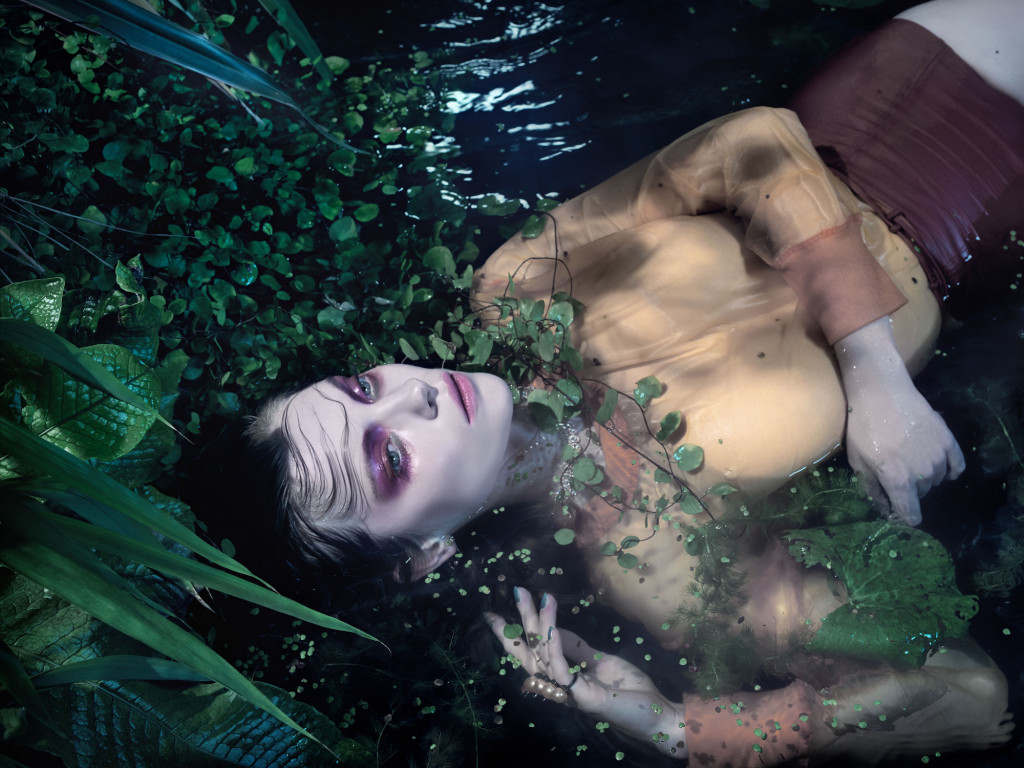
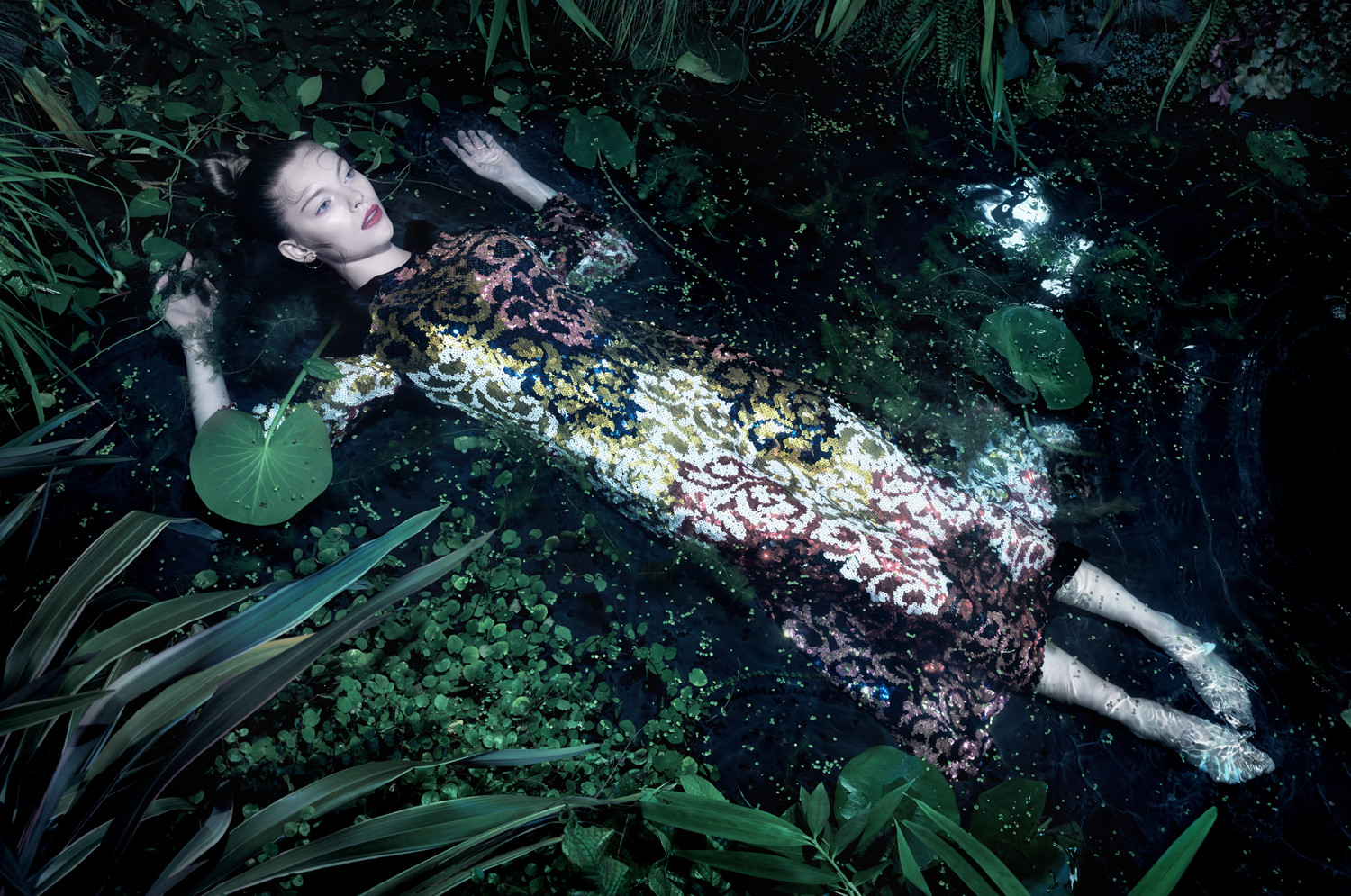
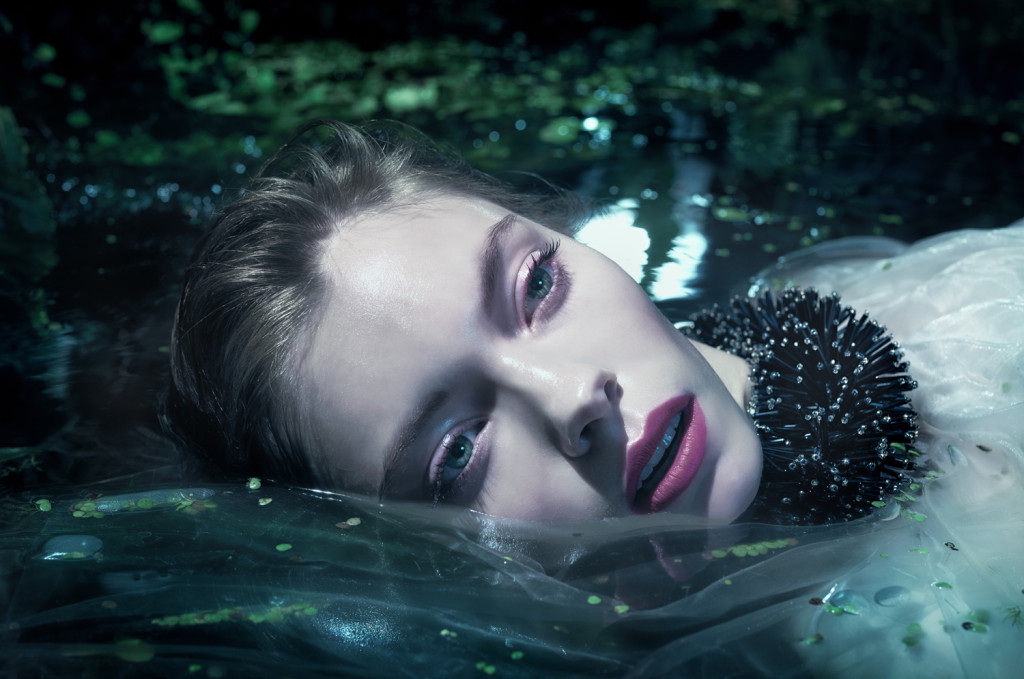
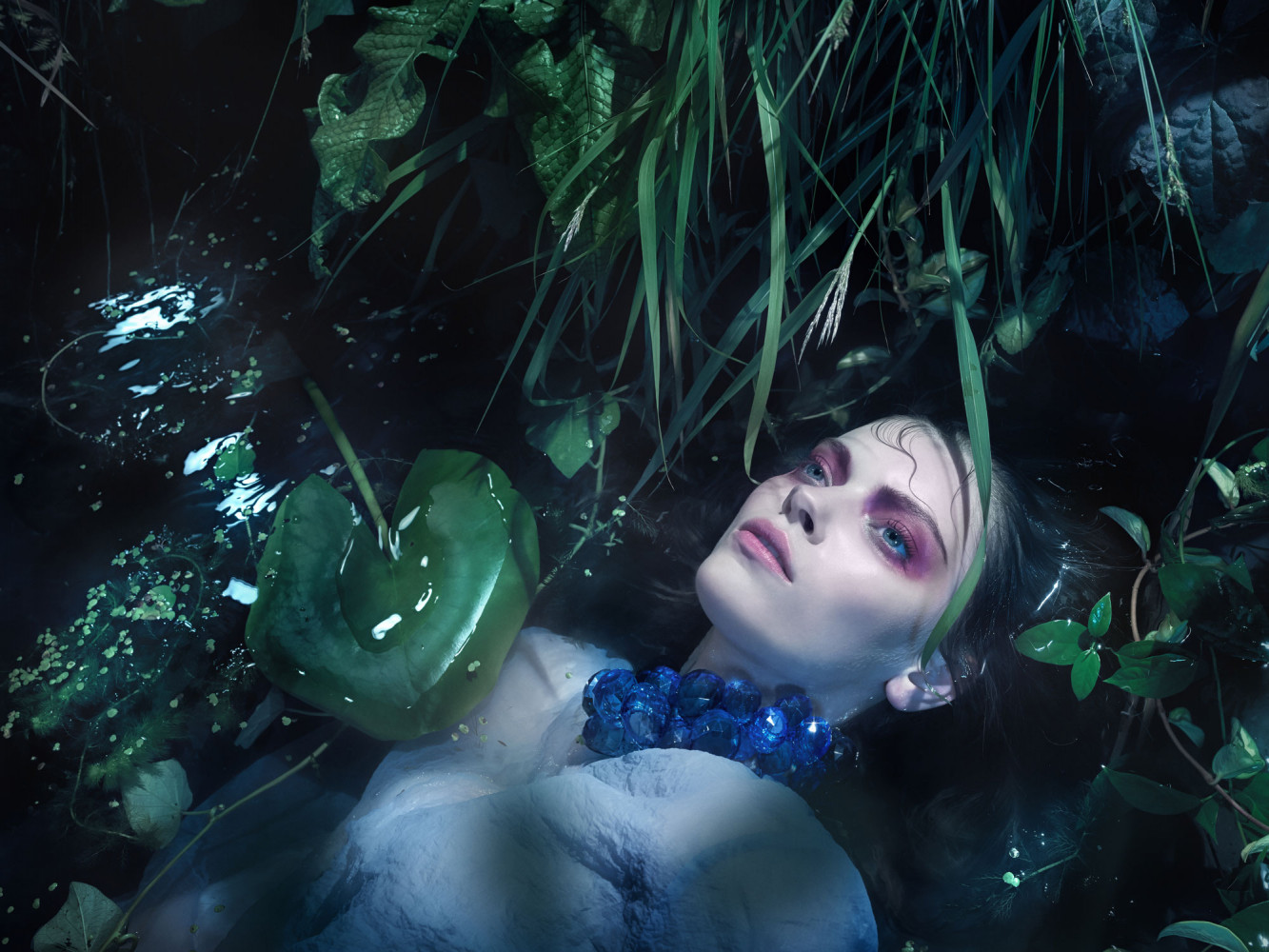
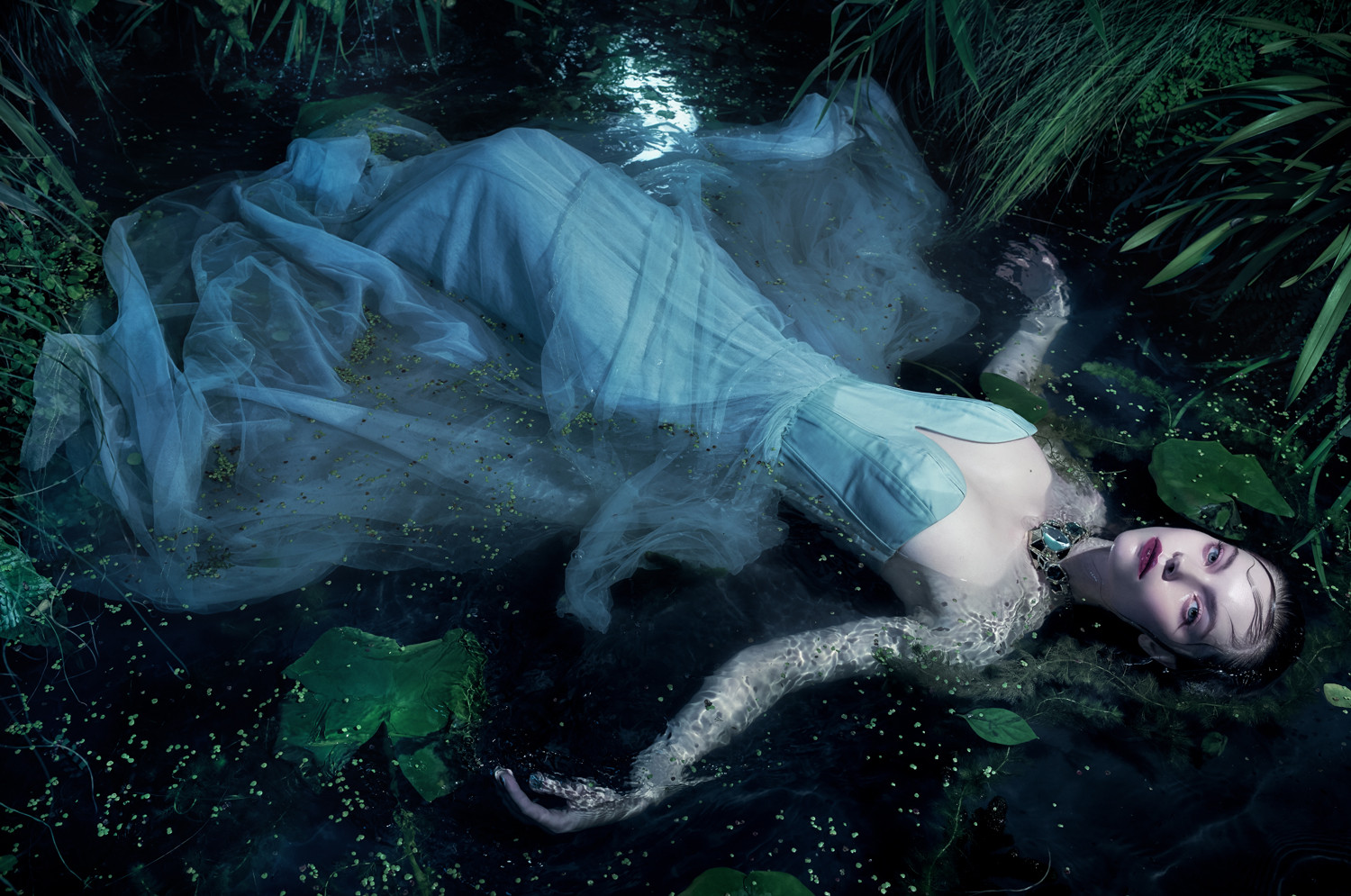
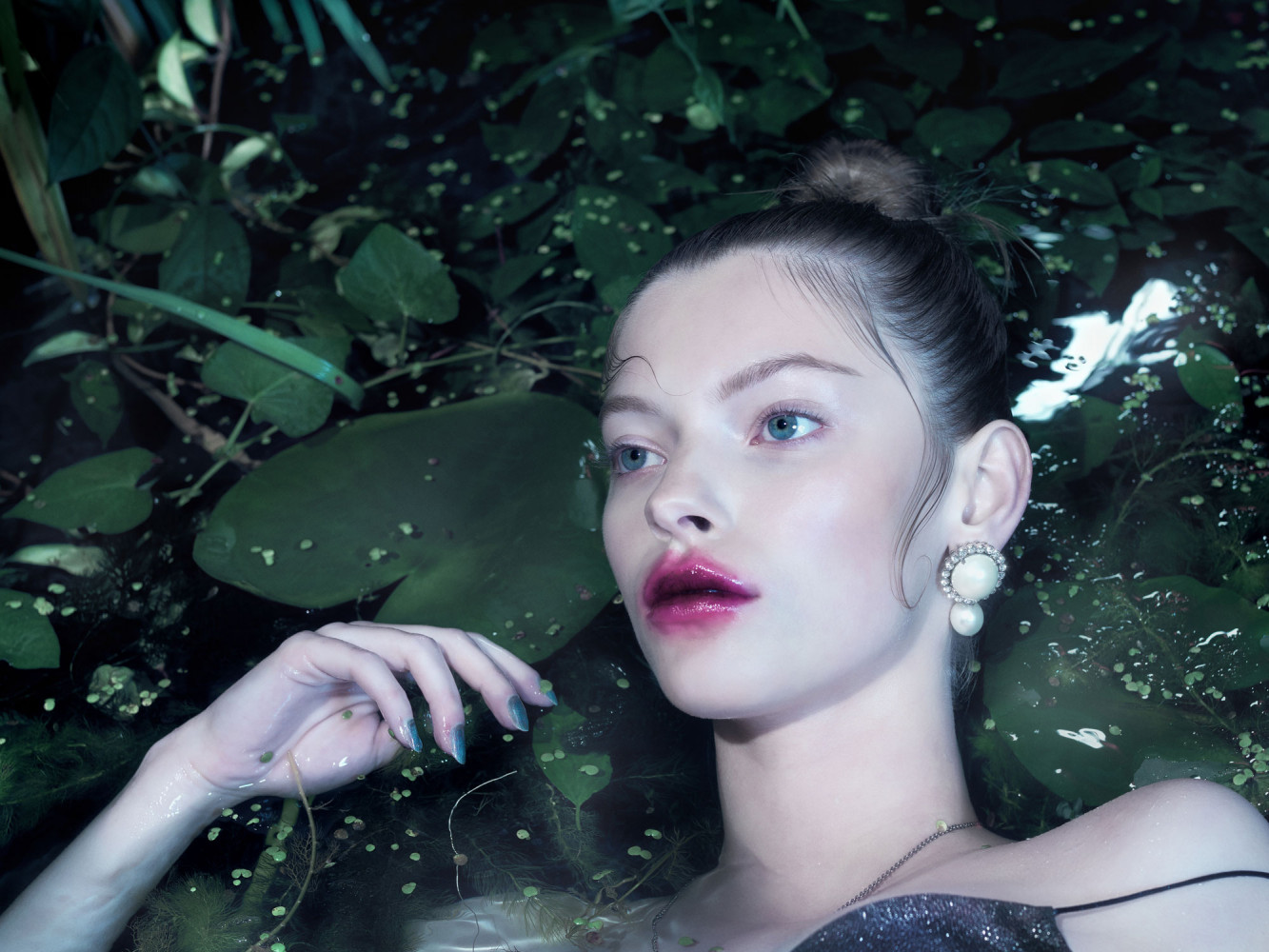
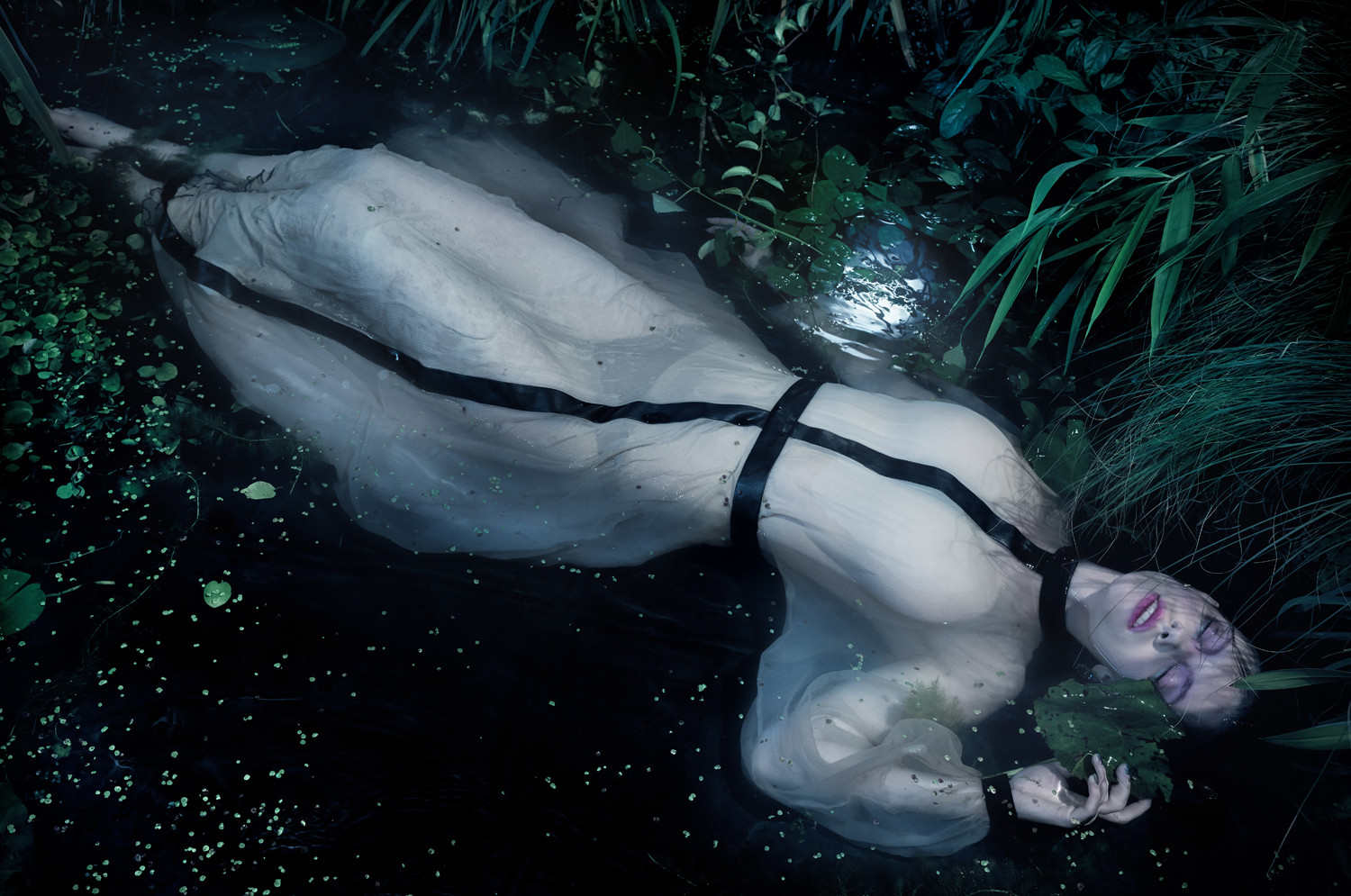
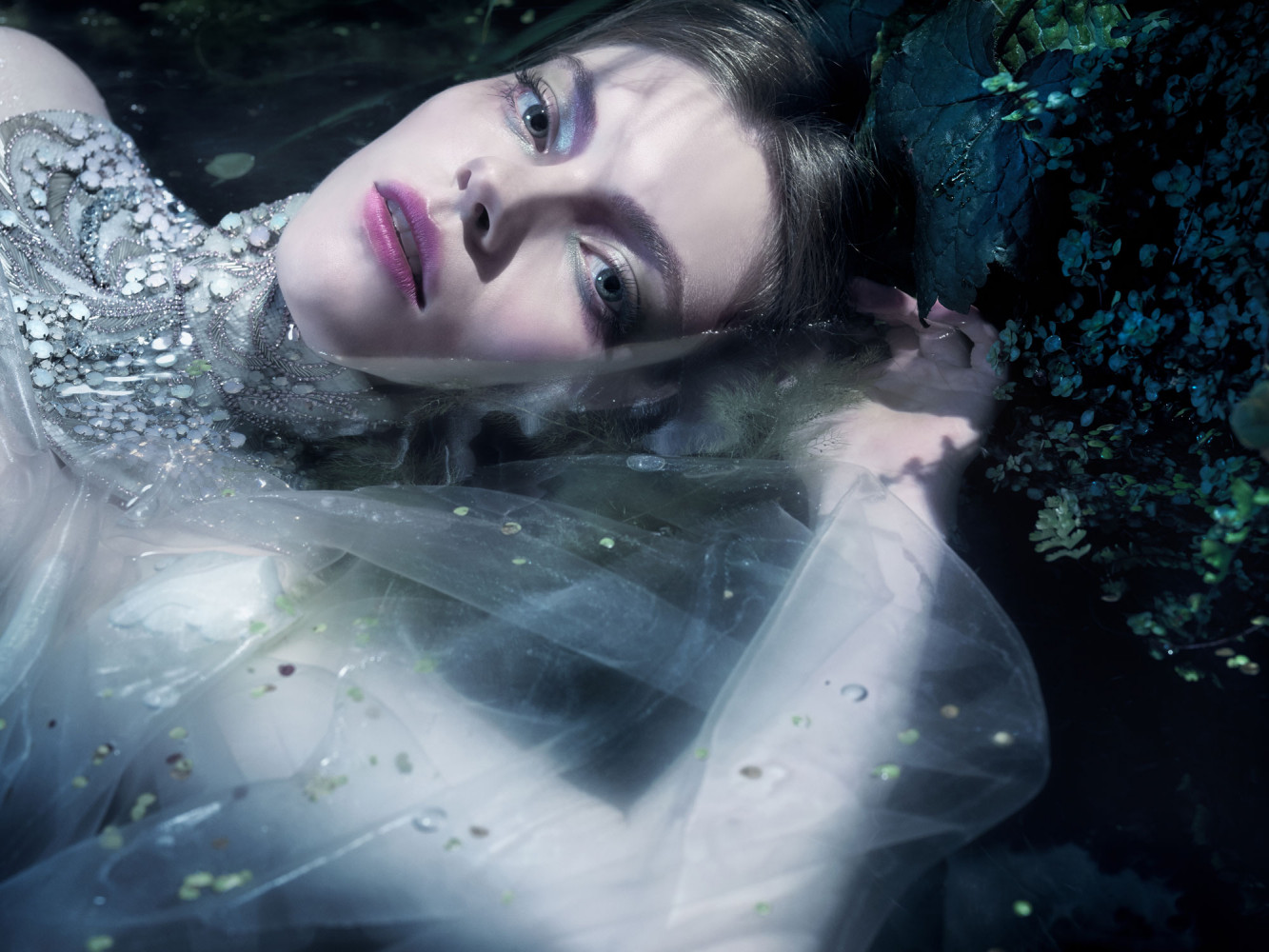








INTERVIEW
Jörg Schieferecke

PHOTOGRAPHY Jörg Schieferecke STYLING Jeannastyling @ Peppermint Cirus ART DIRECTION & SET DESIGN Sandra Wiesemann HAIR Suzana Santalab using Paul Mitchell MAKEUP Tanja Kern @ Bigoudiusing Chanel, MAC and Laura Mercier PHOTO ASSISTANT Christian Koch RETOUCHING Stephan Seebauer @ Raff Digital MODEL Tamina Zakrzewski @ Modelwerk CAMERA Leica S (Typ 007) with Elmarit-S 45 f/2.8 ASPH. (CS) and Summarit-S 70 f/2.5 ASPH. (CS)
Nick Cave and Kylie Minogue’s song ‘Where The Wild Roses Grow’ was the source of inspiration for Jörg Schieferecke’s ‘Drop Dead Beauty’. Complex and experimental sets – including a corpse in the water – create the backdrop for a mysterious, moonlit beauty series full of refined and flawless aesthetics.
You’ve been working as a photographer for a few years now… do you have the feeling that something fundamental has changed in fashion photography at this time?
Life is change, and photography changes just as much. There are crazy amounts of mobile phone photos that get posted online immediately – and this flood of imagery changes our way of seeing things. As a result of digitisation, there are many ways to get to reach a goal. So it is important to have a position and a vision, which you then realise with the appropriate means.
Do you feel limited today when taking fashion shots? Are you still able to do what you consider right?
The work process for productions has changed considerably. The client can have an immediate influence on individual pictures. On the one hand, this allows for a very client-oriented way of working; on the other hand, of course, it limits your own ideas. You must be ready to compromise.
However, on the whole I’m lucky to have clients who book me because of my work and who give me creative freedom. I definitely have a perfectionist tendency. If I don’t like something, then I won’t just photograph it, but will look for solutions until both I and the clients are satisfied.
So far, for photo editorials, I’ve always been able to realise ideas that emerged in my studio.
Do you consider that the increase of moving images in the media, in particular in social media, is adding pressure to photography, and even pushing it aside? Or do you think it stands up to its own quite well? Where do you see the role of video in this regard?
Film has become an exciting medium, especially as it’s now possible to produce good results without an excessive effort and enormous financial means. I have always found moving pictures fascinating, and at my studio we are experimenting more and more with the creative possibilities offered by this medium. Having said that, I don’t believe that good photography has lost its validity. Change – yes. Suppression – no.
You photographed ‘Drop Dead Beauty’ for the S magazine. What’s the series about?
It’s about beauty, fugacity, guilt and innocence. Aesthetics are at the forefront: dark water in the moonlight, reflections on the surface, water plants and light skin like milk and honey...
Mirror effects, reflections, colours, diverse flowing textures.
Was there an influence from the well-known Nick Cave and Kylie Minogue song, ‘Where The Wild Roses Grow’?
I’d had the idea of photographing a beautiful corpse in moonlit water for a long time. Sparkling and flowing.
And yes, I consider Nick Cave’s song is about the preservation of beauty. Killing for love. Putting a stop to fugacity. Poetry… very inspiring.
Lots of plants, the pond and the beautiful corpse – the set is pretty complex. To what degree did everything we see emerge during the actual photo shoots, and what role does post-production play in this case?
We built the complete set, with the plants, the pond with its reflections, and the moonlight, in the studio.
I come from analogue photography, and this is the way I work: I have a clear idea in my mind, and during the photo production I try to get as close as I possibly can to that vision. I use post-production to smooth and polish things out, and to complete a certain look, but rarely to start it out with.
You experiment a lot with overexposure, reflections, distortion, blurry movement – that could be called your photographic signature. How do you see your style?
Yes, I love to experiment. I want to tell stories. I use my means to set the stage – set, light, perspective and picture composition – worlds of imagery. The basic aim is that every production be better than the one before it. There’s nothing as boring as replicating yourself.
How did you find working with the medium format Leica? Do you often work with medium format?
I virtually always work with medium or large format. Leica doesn’t only enjoy a cult status; its cameras and lenses are among the best in the world. Leica stands for precision work. In this regard it was wonderful to be able to work with this camera.